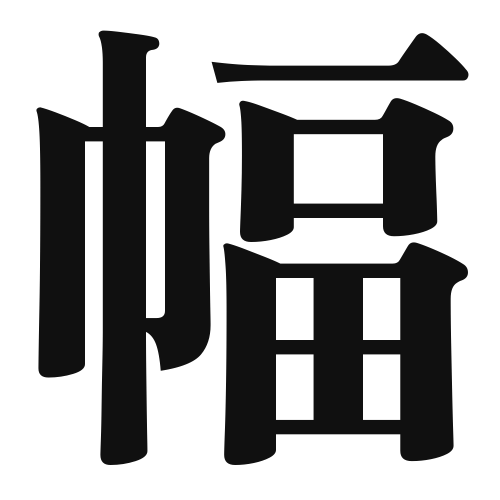1. Overview of Meaning
The kanji “幅” (haba) means “width” or “breadth.” It refers to the measurement of something from side to side, indicating how wide an object or space is.
2. Formation and Radical
The kanji “幅” is a compound character (会意文字) formed by combining two elements: the radical “巾” (meaning “cloth” or “fabric”) and the character “白” (meaning “white”). The radical suggests a relationship to measurement, while “白” adds a sense of clarity or purity to the concept of width.
The radical of “幅” is “巾,” which is often associated with items related to cloth or fabric, emphasizing the idea of measurement.
3. Examples of Usage
Common words and phrases that include “幅” are:
- 幅広い (habahiroi) – wide, broad
- 幅員 (fukuin) – width of a road
Example sentence in daily conversation:
この道の幅はどれくらいですか? (Kono michi no haba wa dorekurai desu ka?) – How wide is this road?
4. Synonyms and Antonyms
Similar kanji with related meanings include:
- 広さ (hirosa) – area, spaciousness (refers more to the extent of space rather than just width)
Antonyms include:
- 狭さ (semasa) – narrowness (indicating a smaller width)
5. Cultural and Historical Background
The concept of “幅” is significant in Japanese culture, especially in relation to traditional crafts and architecture, where measurements are crucial for aesthetics and functionality.
Proverbs and idiomatic expressions that include “幅” are less common, but the idea of width often appears in discussions about balance and proportion in art and design.
